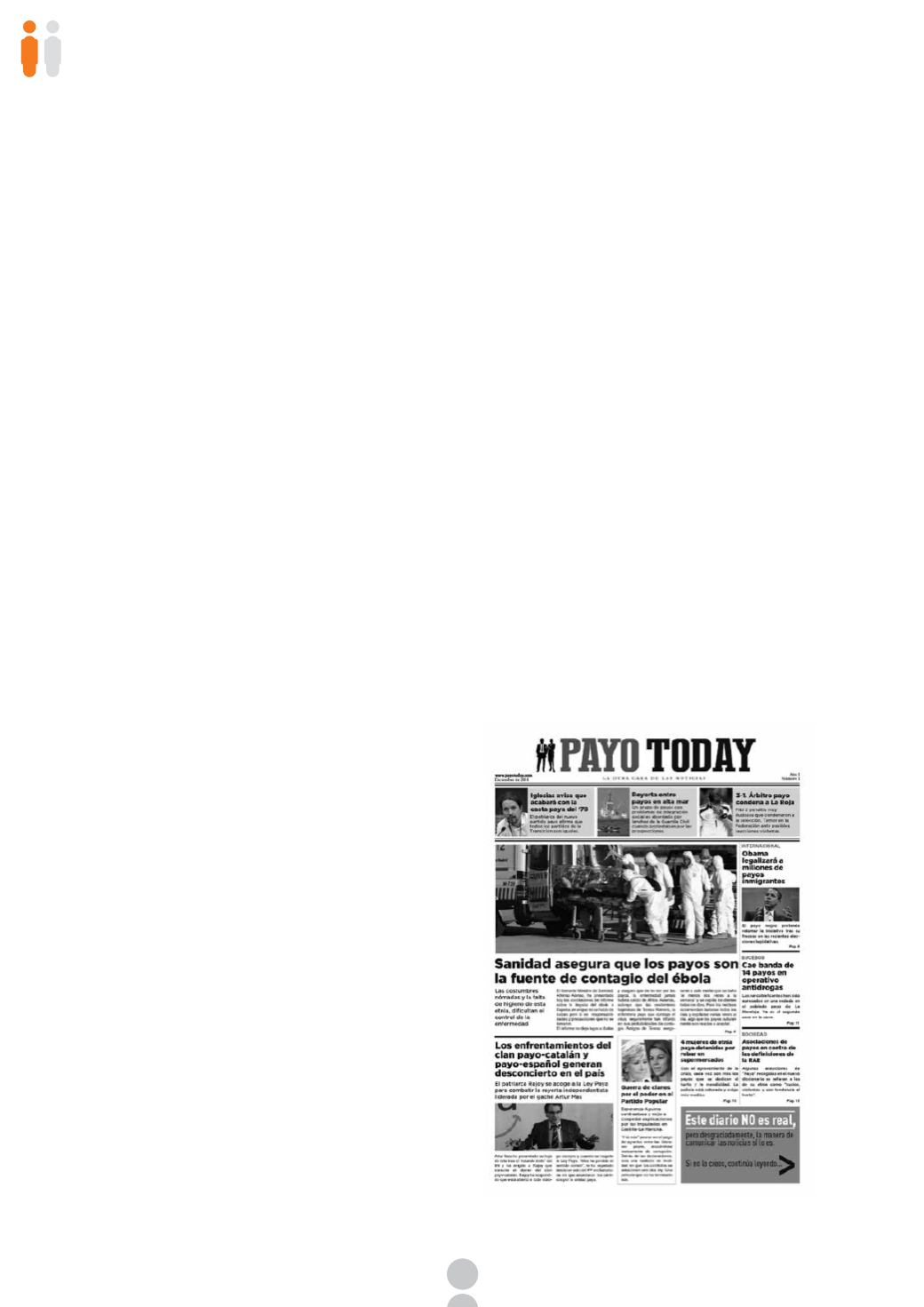

116
Discrimination and the Roma Community 2014
5. PAYO TODAY,
a humorous way to drive home
a point with journalists
At the end of 2014 the Fundación Secretariado Gitano
launched an awareness-raising initiative targeting jour-
nalists and the media. The main aim was to invite them
to think about the responsibility they have in forming
people’s image of the Roma community.
The initiative consists of a four-page printed newspa-
per called
PAYO TODAY
(NON-ROMA TODAY), a vid-
eo simulating a TV news programme and a dissemina-
tion strategy in the social networks. Humour is the fun-
damental ingredient. It turns the tables on media outlets
that still make unnecessary mention of the ethnic group
of those involved in news stories even when it does
nothing to aid in the comprehension of the news item
using inappropriate terms such as “reyerta” (brawl) “clan”,
“patriarch”, “race”… ).
PAYO TODAY
features headlines
such as: “The health department states that Payos are
the source of the recent outbreak of Ebola (a parody of
a real recent headline that read: “The Health Department
states the Roma people are at the origin of the measles
outbreak ”), “Little payo Nicholas, symbol of his species”,
“Iglesias warns that he will eliminate the payo caste of
78” and many others.
This initiative is just part of the work that the Fundación
Secretariado Gitano and other organisations are doing
to call for fair media coverage that is better adapted
to Spanish Roma today by drawing attention to some
poor journalistic practices. Along these same lines, in
2010 we published the
Practical Handbook for Journal-
ists. Equal treatment, media and the Roma community.
The awareness-raising initiative PAYO TODAY, with
the support of the Ministry of Health, Social Services
and Equality and the European Social Fund, included the
postal distribution of 4,000 copies of the “newspaper”
to press, radio and television in all of Spain and it was
hand-delivered at the entrance of some newspaper
outlets by FSG workers.
The strategy employed in social networks was par-
ticularly relevant and to that end an Internet micro site
was created
(www.payotoday.com) which contains the
different elements of the campaign: PDF version of the
newspaper (with changing content and even with the
participation of followers in the social networks with a
headline contest); TV news programme; ten measures
to improve the journalistic treatment of the Roma com-
munity; examples of “poor journalistic practices,” etc.
Although this initiative targeted journalists, its broad
acceptance by the media, its humour and the parallel
social network strategy contributed to wide-ranging
dissemination among the general public and was the
subject of television reports on the programme called
El Intermedio
(channel 6),
La2 Noticias
(RTVE-Spanish
Radio and Television), RTV News of Castile-Leon; on the
radio (
A vivir que son dos días
of the SER,
Julia en la
onda
of Onda Cero, etc.) and in print and digital press (
El
Pais, Planeta Futuro
, and more than 30 other references.












